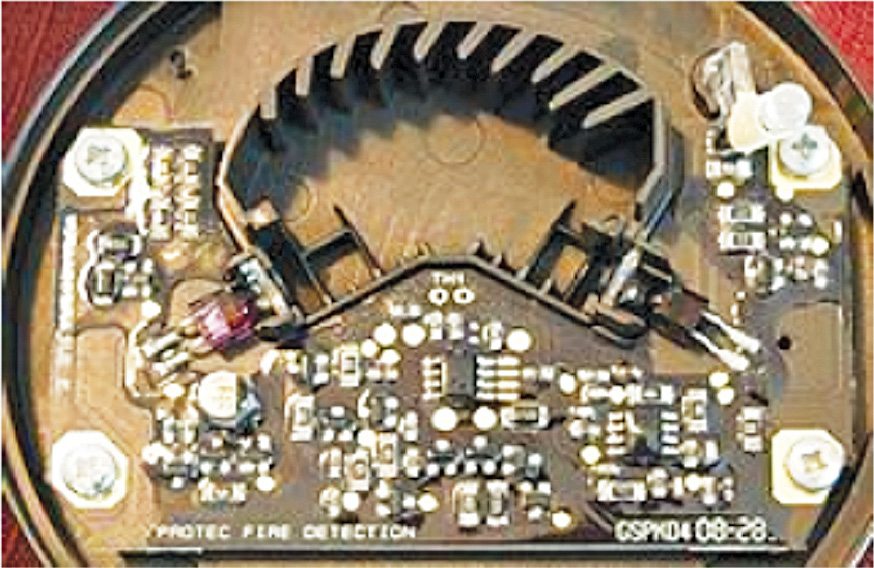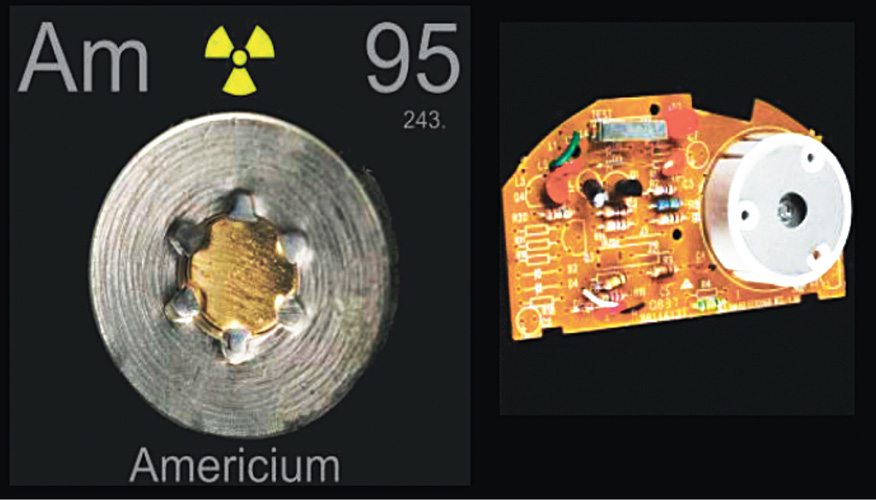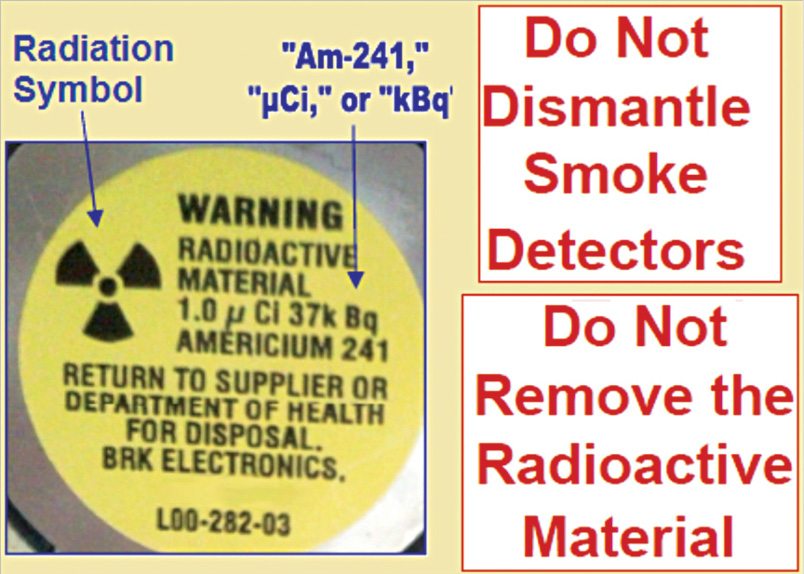Residential fires have become a significant problem throughout the country. Fire officials estimate that at least fifty per cent of lives that are lost due to residential fires could be saved by installing early-warning fire-detection devices. The purpose of this guide is to provide information concerning smoke detectors used in conjunction with early-warning smoke- and fire-alarm systems.
Smoke and heat
There are two types of residential fire-detection systems: smoke detectors and heat detectors. The basic residential detection system relies primarily on the use of smoke detectors, which have a sensing chamber, alarm-sounding device and a means of electrical power transmission.
There are two kinds of residential smoke detectors: photoelectric and ionisation. The former are more responsive to fires that begin with a long period of smoldering, whereas the latter are more responsive to flaming fires. Since we cannot predict the type or timing of fire, for maximum protection, it is recommended to use both technologies in homes.
Photoelectric smoke detectors. These aim a light source into a sensing chamber. Smoke produced by a fire affects the intensity of a light beam passing through air. Smoke can block or obscure the beam. It can also cause the light to scatter due to reflection off smoke particles. These detectors are designed to sense smoke by utilising these effects of smoke on light.


In a photoelectric light-obscuration smoke detector, when smoke particles partially block the light beam from the inbuilt light source, reduction in light reaching the associated photosensitive device alters its output. Change in this output is sensed by the detector’s circuitry, and when the threshold is crossed, an alarm is initiated.
However, in a photoelectric light-scattering smoke detector, a light source is beamed into an area not normally looked out by a photosensitive device. When smoke particles enter the light path, light strikes the particles and is reflected onto the photosensitive device causing the detector to respond.
Photoelectric smoke detectors are better suited to detect slow smoldering fires that are characterised by particulates in 0.4 to 10 micron range.


Ionisation smoke detectors. These use a small radioactive source as a key component for detection of smoke particles. The radionuclide used in these detectors is Americium-241 (Am-241), which is bonded to a metallic foil and sealed within a small chamber. You can find the radioactive button like the one shown in Fig. 4 in most ionisation smoke detectors. A trace of Americium creates charged particles that betray the smoke.
In principle, ionisation smoke detectors have a small amount of radioactive material between two electrically-charged plates, which ionises the air and causes current to flow between the plates. When smoke enters the chamber, it disrupts the flow of ions, thus reducing the flow of current and activating the alarm.
Since reduction in ionised particles results in a decrease in chamber current, that is sensed by the electronic circuitry monitoring the chamber (when current is reduced by a predetermined amount, a threshold is crossed and an alarm condition is established). A dual-ionisation chamber is required to compensate for the possible effects of humidity and pressure changes (changes in humidity and/or atmospheric pressure affect chamber current and create an effect similar to the effect of particles of combustion entering the sensing chamber).
A dual-chamber detector utilises two ionisation chambers. One is a sensing chamber, affected by particulate matter, humidity and atmospheric pressure, which is open to outside air. The other is a reference chamber, which is partially closed to outside air and is affected only by humidity and atmospheric pressure, because its tiny openings block the entry of larger particulate matter including particles of combustion.

An electronic circuitry monitors both chambers and compares their output. If humidity or atmospheric pressure changes, outputs of both chambers are affected equally and cancel each other out. When combustion particles enter the sensing chamber, its current decreases while the current of the reference chamber remains unchanged. The resulting current imbalance is detected by the built-in electronic circuitry.

Characteristics of an ionisation detector make it more suitable for detection of fast-flaming fires that are characterised by combustion particles in the 0.01 to 0.4 micron-size range.
Beware! It is illegal to disassemble an ionosation smoke detector and remove the tiny radioactive source.
Also, with the obvious potential for the spread of radioactive contamination, once the Americium source is removed from its holder, it becomes extremely difficult to arrange safe disposal.
Advanced smoke detectors
Smoke detectors offer the earliest possible warnings of fire. In certain circumstances where standard smoke detectors are unsuitable, special-purpose detectors may be used. For example, laser based smoke detectors are designed for use in areas that require extremely early warnings of fire. These are designed to detect the earliest particles of combustion, making these ideal for any area with mission-critical operations.
Laser based smoke detectors are ultra-sensitive to smoke, being as much as 100 times more sensitive than standard ones.
Aspiration smoke detectors use a pipe and fan system to draw smoke particulates back to the detection chamber. Most air-sampling detectors are aspiration smoke detectors that work by actively drawing air through a network of small-bore pipes laid out above or below a ceiling in parallel, covering a protected area. Small holes drilled into each pipe form a matrix of holes (sampling points), providing an even distribution across the pipe network. Air samples are drawn past a sensitive optical device, often a solid-state laser, tuned to detect extremely small particles of combustion.
Air-sampling detectors may be used to trigger an automatic fire response. Likewise, some smoke detectors use a carbon-dioxide sensor or carbon-monoxide sensor in order to detect extremely-dangerous products of combustion.
Lately, designers have begun to introduce smoke detectors that combine photoelectric and ionisation smoke sensors in the same unit. These units combine the advantages of both the sensors into an advanced unit that detects smoke from a broader spectrum of fires. A residential fire-detection system may also include a heat detector.
There are two types of heat detectors: fixed-temperature and rate-of-rise. Fixed-temperature detectors are configured to wake up when air temperature exceeds the pre-set temperature. Rate-of-rise detectors raise an alert when temperature in the immediate vicinity rises higher than the pre-set rate-per-time factor.

What to look for
Photoelectric (optical) smoke detectors are quicker in detecting smoke generated by smoldering (smokey) fires. Ionisation smoke detectors are quicker in detecting smoke generated by flaming (hot) fires.

Obscuration is a unit of measurement that has become the standard definition of smoke detector sensitivity. It is the effect that smoke has on reducing visibility (higher concentrations of smoke result in higher obscuration levels, lowering visibility). Typical smoke detector obscuration rating is shown in the table.
For each type of smoke alarm, the advantage it provides may be critical to life safety in some fire situations. Fatal fires include a large number of smoldering fires and a large number of flaming fires. As it is very difficult to predict the type of fire disaster, or when it will occur, in addition to individual photoelectric and ionisation smoke detectors, a combination of detectors that include multiple technologies in a single unit are recommended for reliable protection. Any smoke detector technology, to be acceptable, must perform tolerably for all types of fires in order to provide early warning of fire at all times of the day or night.
You may also like other sensor articles
T.K. Hareendran is an electronics hobbyist, freelance technical writer and circuit designer









